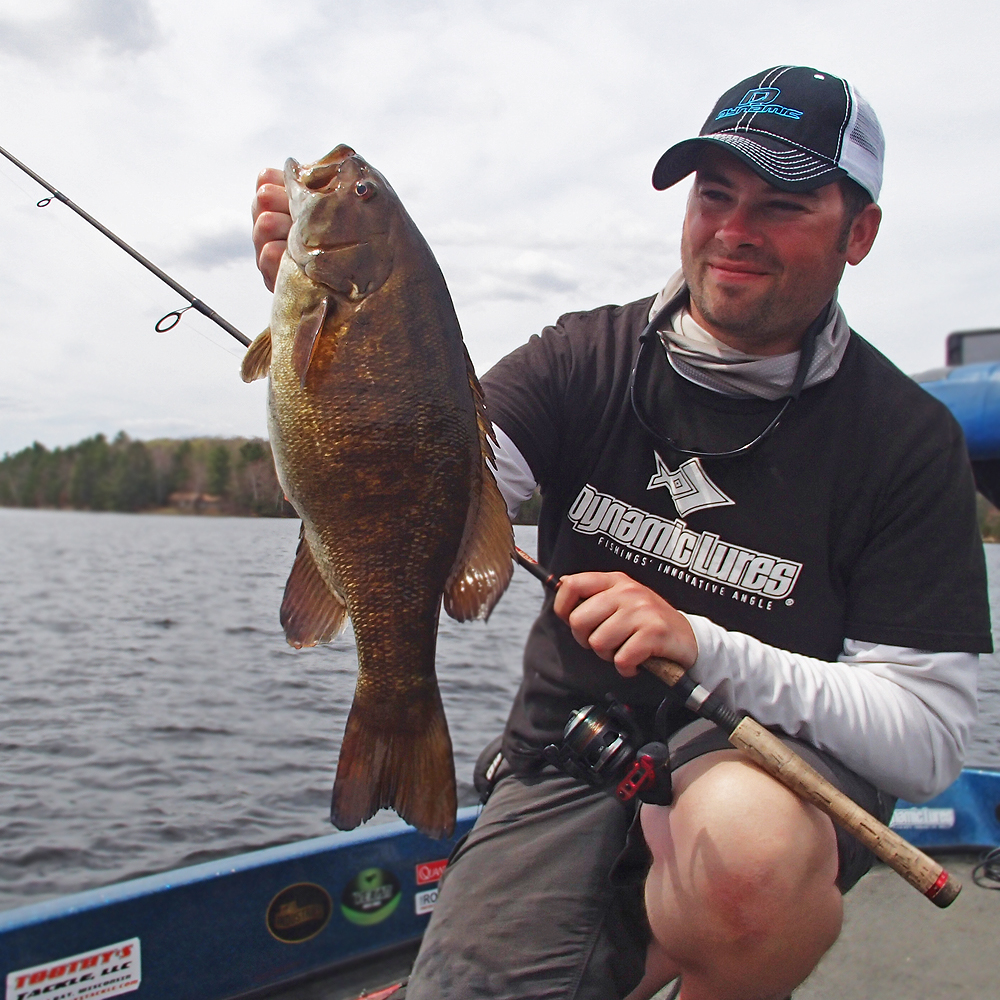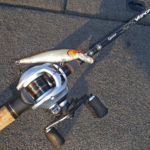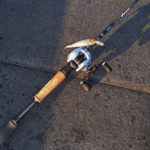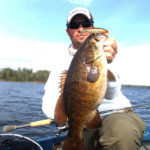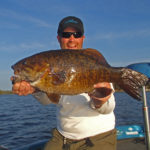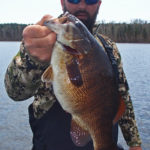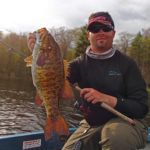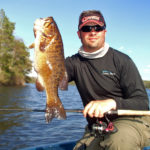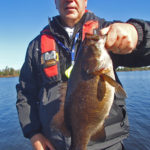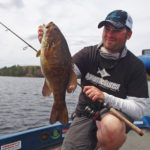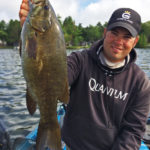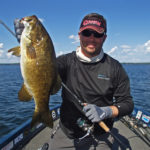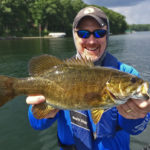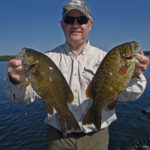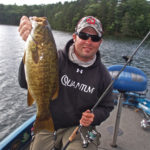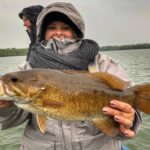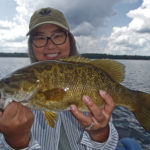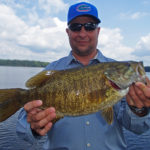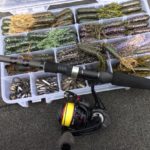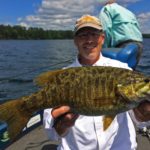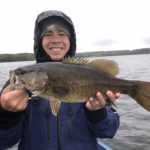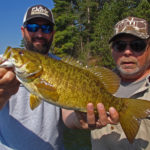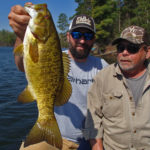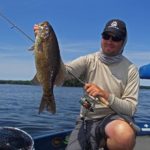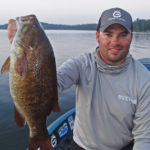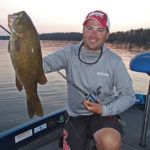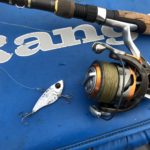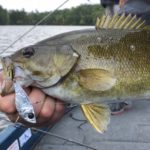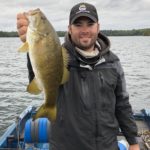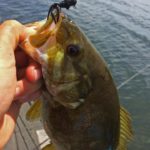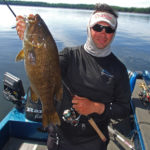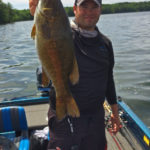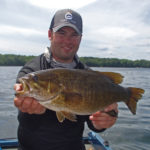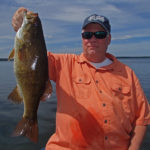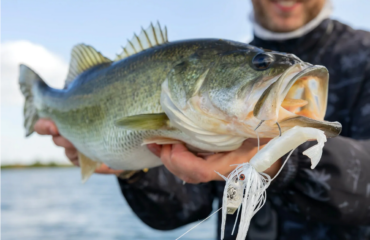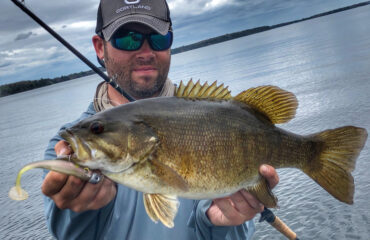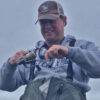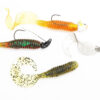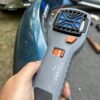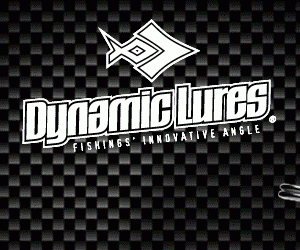Top Smallmouth Bass Baits of 2018
By Andrew Ragas
At the end of every season, I reveal the secret baits that caught the most fish for customers and I. Now that my 2018 bass fishing season has concluded, we glance back at the dominating baits and presentations that screamed success for big fish this year. Revisiting the old, consistent standbys from each of the previous years, and revealing some new.
I have to be on the top of my game daily, and my only requirement in all fishing lures is they better catch fish for my guests and I, providing we are skilled at using them and manipulating their every movement and action! At any given time, I keep up to 10 rods rigged and ready with an assortment of fish catchers at my Ranger’s front deck….. along with another 10 or so below in its rod locker. Overkill, yes. But here’s my logic: A diversified lure selection like this will help not only make you a more versatile bass angler, but allow you to catch more fish and be prepared for the called upon presentation at any given time.
Prime patterns and favorite lures can be revisited each year, especially as the environment and behaviors of smallmouth bass dictate their locations and influence their feeding habits. Each year a few annual constants remain, but new discoveries and techniques succeed in the underwater world below me.
As any observant and scientific-minded angler can conclude, the success you have with your favorite lures and technique-specific methods depends on weather and water conditions, fish locations, and habitats. On the lakes and rivers you fished throughout 2017, what were some of your favorite and most productive methods to catch big fish throughout the year?
Here are this season’s winners, in no specific order.
[su_divider top=”no”]
Dynamic Lures Travado
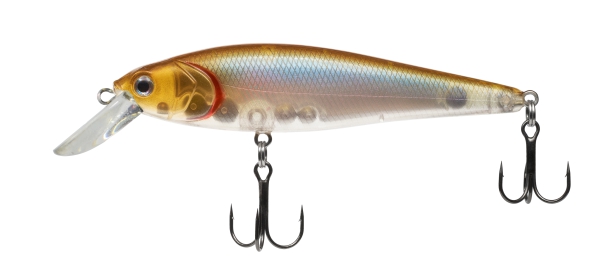
This is my favorite big fish suspending jerkbait. Approximately 4 inches long, casts like a rocket, runs deep (up to 6 ft with mono), and has a wide side to side action and hang.
The Dyamic Lures Travado is a short lip jerkbait that suits best for shallow to mid depth presentations. In my neck of the woods, it tends to fish best when water temperatures are between 45 to 60 degrees, so spring and fall. With an average diving depth of 3 to 5 feet, it casts like a bullet at 3/8 oz with medium heavy action casting gear with 10 and 12 lb. copolymer and fluorocarbon lines. I’ve been using the Travado in spring and fall in colder water temperatures as a search bait to find where the feeding wolfpacks of smallmouths are located and aggressive power fishing techniques must be employed. I fish suspending jerkbaits often, and always have at least a few different types tied onto my rods year-round. In spring, during the first three weeks of May, I use them 100% of the time. The only Travado color I ever use is Ghost Fish. It is the perfect representation of ciscoes, which is the main forage species in many of my favorite waters. In 2018, Dynamic Lures Travado caught some of my largest smallmouth of the spring pre-spawn season, which includes a re-capture of my 22-inch 7.5 lb. personal best.
Nothing is worse than having trophy fish come unpinned from weak and dull treble hooks. For best results, replace factory hooks with Trokar Tk300 round bend treble hooks.
[su_divider top=”no”]
Rapala X-Rap 08 – Hot Head
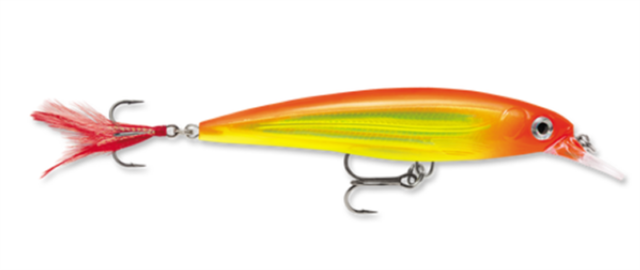
It’s timeless, simple, and slimmed down compared to other suspending jerks and slashbaits I throw. Often the best baits are those that remain unchanged, and continue to produce year after year.
I grew up fishing many northwoods lakes with the X-Rap in Hot Head color. Then for a long while, I think my fish grew conditioned to it and it was placed on retirement for a few seasons. 2018 was the re-birth of the Hot Head, in sizes 08 and 10. It was a go-to for customers and I throughout the spring and summer seasons when smallmouth were on a baitfish feed.
The Hot Head color is perfect for northwoods smallmouth. It contrasts best on my tanic brown waters, and can be seen by fish from miles away on the clearest waters. It’s the only color one ever needs.
Due to its slender profile and strong construction, the X-Rap 08 is built for accurate, long distance casting. What separates this suspending jerk from others is I can fish this one comfortably with my favorite 7ft med. heavy spinning rod with high-speed Quantum Smoke 30 Speed Freak reel. The X-Rap incorporates a long-cast design, enabling weights to shift during the cast. Its weight-forward design is a benefit because it allows anglers to cover vast amounts of water quickly, making it an effective search bait. The key characteristic of the X-Rap is that it can be fished in any type of manner and according to the moods and feeding patterns of the fish. This correlates with the retrieve of the X-Rap and the way it is fished as it involves a lot of mixing and matching according to the behavior of the fish.
My success with the X-Rap is always dictated by the activity and aggression levels of the fish. For instance, on days when smallmouths are active and striking everything in sight, I prefer retrieving the X-Rap with an erratic hard wrist twitching and rod ripping motion. In this situation the rod tip is pointed down towards the water and I employ a rapid erratic rip-pull-rip motion through the water. After a series of 3 to 5 rips, I allow the lure to pause for a second before resuming the motions again. Another tactic that works well is the sweep retrieve. This is similar to the hard twitching retrieve but instead of rapid erratic jerks I use longer, more powerful jerks with slightly longer pauses.
The X-Rap family of baits comes with a pair of razor-sharp VMC trebles, but I recommend swapping them in favor of Trokar Tk300 round bend treble hooks.
[su_divider top=”no”]
Modified Ned Rig
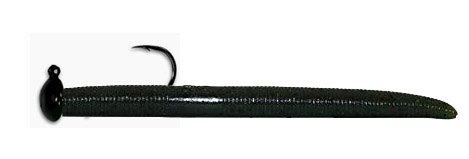
The Ned rig came onto the bass fishing scene a few years ago when Ned Kehde concocted this jig worm. Since then, the entire bass fishing world has gone mad and fallen in love with it. It excels in difficult fishing conditions, on pressured waters, and is one of the best finesse fishing options to consider.
In prior seasons, I have discredited the Ned rig, bashed it, and called it the dumbest little lure. It’s featureless and anybody can succeed with it. But what I learned about it that makes it wildly successful are its physical properties and characteristics.
In summer 2018, I had an eye-opening experience with it, and I’ve kept it tied onto a rod ever since. It’s a numbers presentation, but it’s one that targets some of the largest bass living in the most pressured lake systems. It’s also the bait to use when smallmouth don’t show interest in tubes or other jigging methods.
Traditionally a small profile, the Ned Rig is typically fished with a 1/16 to 1/8 oz. mushroom style jig head, and tipped with a 2 to 3 inch tail segment of a stick worm. The flat mushroom style jig head allows a stick bait to stand and be presented upright. This is an angle bass are new to.
Even though many anglers fishing the rig are scoring gargantuan numbers of bass and experiencing 50 to 100 fish days with it as a finesse option, the Ned Rig is my solution for big smallmouth when they’re fixated on leech patterns – typically from mid June through August.
Rather than use the most common Ned Rig sizes and styles, I have taken the approach to a different level and modifying it for my big bass. I fish it with a 5/16 oz. Super K Jigs mushroom head. Then, rather than use a small piece of worm on the business end, I will rig an entire 5 inch full bodied stick. This weeds out all of the dinks.
I bomb cast it for long distances, and hop and dead stick it along the bottom in order to imitate a leech. Always keep pressure on the line in order to detect the most subtle bites. An immediate hook set will result in the bass connecting with hook in the roof of the jaw, 99% of the time.
Black colors only. Any worm manufacturer is fine. As long as it’s solid black or smoke color to represent a leech. I have friends custom pour me stiffer worms so I can catch up to 10 fish per 1 bait. I also turn to Bizz Baits, too.
Northern Wisconsin smallmouth bass are in trouble for seasons to come……… until they become conditioned and it’ll be time to reinvent the wheel.
[su_divider top=”no”]
Strike King Coffee Tube, with Freedom Tackle Zodiac Jig
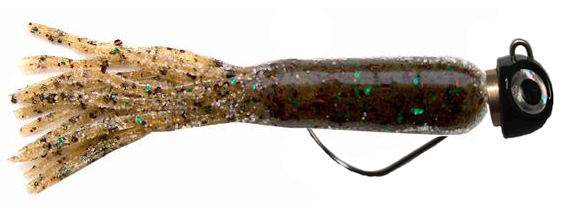
The Strike King Coffee Tube is my favorite tube of all time. I fish my tube jigs utilizing one of two methods: Rigged with a swinging jig head, and a tube jig insert. As far as rigging the tube with swinging jig, the ability to swap out original factory hooks in favor of using a favorite brand and style is where the Freedom Lures Zodiac Jig wins me over. This is a concept many smallmouth bass anglers look for. While the chemically sharpened hooks available in original packaging with the jig are rightfully sharp, I modify the jig to my specifications, making it sharper and stronger to better withstand rocks and snags, by swapping out factory hooks in favor of my preferred Trokar 2/0 EWG’s. I then take further steps, matching hook type and size according to the soft plastics smallmouths want. When hooked, smallmouths are not able to use this tube jig as leverage when trying to shake free, thus more fish are landed.
In 2018, the simple tube jig was the most reliable, effective, and biggest fish producer in my boat for leisure fishing, and guide trips. I hosted several guide trips in which fish wouldn’t care to grab anything else but a slowly-dragged tube along the bottom. I dealt with a lot of coldfronts and adverse conditions throughout the year, so that’s my theory why the tube reigned for customers and I.
When smallmouths aren’t chasing moving baits, or won’t clobber another type of jig, the trusty tube often saves the day. Despite being one of the most popular smallmouth lures of all time, smallmouths remain to be unconditioned to its seductiveness and effectiveness.
No other specific bait or rigging combination accounted for more numbers of smallmouth bass in 2018 than the coffee tube paired with the Freedom Tackle Zodiac, or simply rigged with a Trokar Tube Jig insert. The only colors I use: Magic Goby / Crazy Craw / KVD Kick. The Freedom Zodiac jig head excels with fishing deep water, with its rapid sink rate. It’s an unbeatable tube jig combination from mid summer through the fall wintering period.
[su_divider top=”no”]
Strike King Rage Swimmer with Trokar Boxing Glove Jig
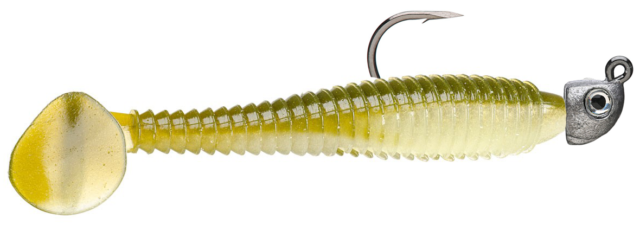
A jig and paddletail remains a simple and effective fish-finder for me. I’m sure it will play well on your favorite clear water smallmouth fisheries too. Take a paddletail, and rig it on a favorite swimming style jig head. Easy and engaging fishing!
It’s the perfect strategy for covering water on windy days, bomb-casting the open water amid cisco schools, and targeting big fish.
From late spring post-spawn, through early fall prior to turnover, Strike King Rage Swimmers on a 1/4 or 1/2 oz. Trokar Boxing Glove Jig accounted for several big smallies, explosive strikes, and major numbers of them from many clear water lakes. It caught fish year-round.
Bomb cast and let the wagging tail and wobble of the head do the work for you. A slow, steady retrieve is best, but I will mix it up with periodic pauses so that the bait slow-rolls back to the bottom. The key is to keep the bait swimming slowly just above the structure and the depths bass are at. A medium, steady retrieve is best with med. heavy action spinning setup, or medium action casting setup.
The rage swimmer features a fat body section, and thin tail that produces a slow wag that’s deadly on A-Rigs and jig set-ups. If you see a lot of 3- and 4-inch cisco or yellow perch swimming around, or bass blowing up on bluegills and other baitfish in the shallows, that’s my identifier to fish a paddletail. Another situation would be if you see smallmouths suspended over structure or corralling schools of perch or ciscoes. Keep in mind that in our clear water, smallmouths are sight feeders, so matching the hatch is of utmost importance. Ayu and Crystal are the only Rage Swimmer colors I use.
My bait combo is fished exclusively with the Trokar exposed hook jighead. It pins every fish that strikes. Great for covering water, catching aggressive smallmouths, and huge ones.
Rapala X-Rap Walk
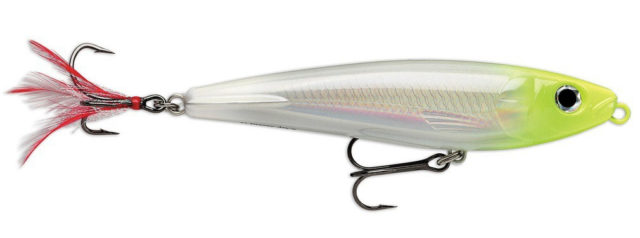
Topwaters and surface baits, longtime bass fishing staples at night, are popular for smallmouths. They are hard to beat when surface activity is prevalent, the lakes are heating up from the sunlight above, and insect hatches take place. When either of these conditions are in play, topwaters often get eaten quickly, and generate vicious strikes.
In most years, the Rapala X-Rap Pop is my go-to surface bait. But for whatever reasons the no-longer manufactured X-Rap Walk produced the best surface bait results for my boat in 2018. For targeting very large bass, I like the bright colored, 4 and 5 inch sizes.
Long casts on 15 lb. monofilament, with powerful sweeps of the 7ft 2″ med. hvy fast action baitcasting rod to generate the optimal walk-the-dog retrieve cadence, and mix some pauses and breaks in between.
The big strikes and huge fish it produced from shallow water during July and August 2018 made me wonder whether we were fishing the Amazon for peacock bass rather than the northwoods for smallmouth bass.
For this presentation, the shallow tops of bars will now become the focal point of your fishing. Rock bars, humps, and shoals are some of the best locations I’ve found for sunset and after dark fishing with topwaters. The tops of them all will usually have the sexiest elements of the structure which could be the largest rock or boulders. Smallmouth often gravitate to them in low light to use as an ambush point. They will also hold on these locations throughout the night, using them as resting areas for the night too.
A topwater fished over the tops of shallow bars will catch the most fish. The sights of explosions and strikes will be something to behold.
Topwaters are my favorites for this hour. They’ll perform best on nights of high humidity and without any wind. Keep a close eye on surface activity or insect hatches, as they are hard to beat when surface activity is prevalent.
YUM Craw Bug
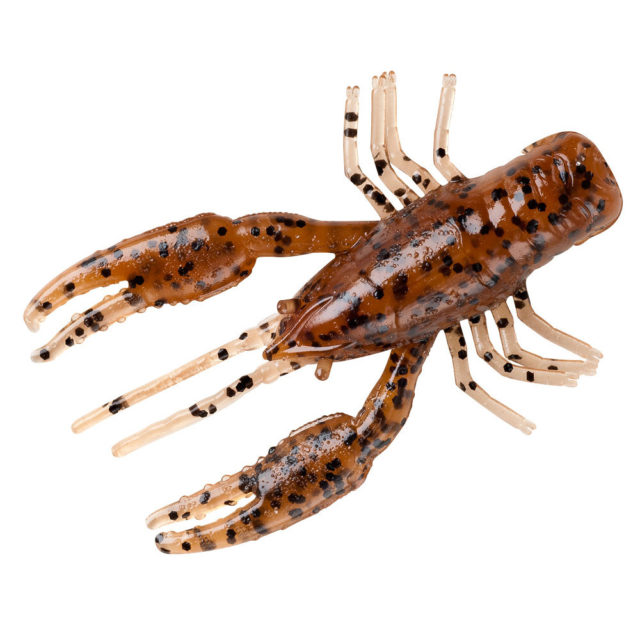
When I taught myself to smallmouth fish 15 years ago, I learned my ways with the Yum Craw Bug. It caught some of my best smallmouth early on in my career on lakes, rivers and flowages. Then for a long time, it went on a retirement for me.
These last two summers, it re-entered my fishing rotation and is now one of the boat’s better options for catching smallmouth during the crayfish molting period, and when bass are heavily feeding on crayfish.
The 2.5″ Craw Bug fishes well on spinning gear with smaller 1/8 oz. and 1/4 oz. football heads. This smallie snack is a fabulous finesse fishing jigging option. It may also be worked with tube jig inserts, as well as Texas Rigged with my favorite tungsten bullet weights and a Trokar Tournament Tube Hook in 1/0 and 2/0 sizes. The 3.5″ Craw Bug meanwhile is fished in similar ways, except with heavier jigs and weights.
When it was introduced in the mid 2000’s, it seems to me that more color options were available back then. My box of craw bugs is mainly comprised of colors and unique shades of crayfish that are currently not in YUM’s color lineup or available for sale anywhere on the web.
Built to satisfy the hunger of bass, the Yum Crawbug delivers an ultra-realistic crawfish imitation is able to fool the most seasoned large bass. Designed with three-dimensional detailing never-before-seen in a soft plastic, the Yum Crawbug features a super-soft texture that makes it incredibly lifelike. Molded with a hollow body and flapping appendages, the Yum Crawbug perfectly imitates a fleeing crawfish as it scurries along the lake floor.
[su_divider top=”no”]
Damiki Vault Blade Bait
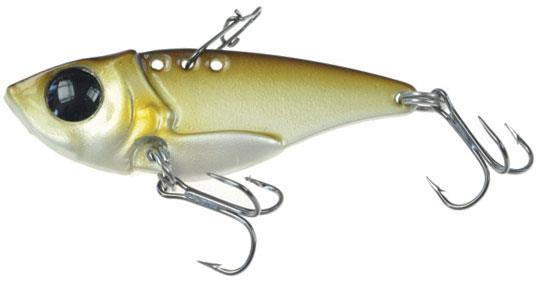
I became acquainted with Damiki Vault blade baits through reading social media posts on Facebook and Instagram. Having learned it’s a cold water, deep water fishing tactic, I knew it would excel on deep schooling smallmouth during the fall season.
The Damiki Vault is a tiny sized, but heavy weight blade-vibration bait. It’s excellent for its long casting and quick sinking abilities, ripping vibration, and it accurately mimics a variety of forage species with its unique vibrating action and realistic color patterns. It also features 3 settings for tying your line. This allows you to vary the pull point based on how deep you want to fish it, and what type of vibration you want. The closer to the head – the bigger the wobble, and the farther back – the tighter the wobble. The hooks that come with these baits suck and are trash, so best to swap out their hooks immediately before use. I’ve found the Trokar TK 300 treble hooks in #2 size to be the perfect substitute.
During the few weeks I fished these from late September thru mid October, bites were epic and fish behaved like they had never seen these baits before. A number of deep schooling and wintering smallmouth bass and walleyes were caught.
I purchased a handful of 1/2 oz. Vaults and fish them with a 7 and a half foot medium action spinning rod, size 30 Quantum Energy reel spooled with 10 and 15 lb. Cortland Masterbraid, and a 3 foot section of 10 lb. fluoro leader.
Blade baits aren’t much different from vertical jigging and rip jigging a jigging rap, snap rap, and lipless crankbait. Most of the fishing done with this lure will be vertical jigging and position fishing in depths greater than 20 ft. Lift off, and drop back to the bottom with fast, powerful rips. The vibration of the bait will do the work and fish enticing for you. Hits will be rapid and powerful, requiring instantaneous quick hook-sets in order to connect with fish. The experience is visually stimulating, as all fish and bites will be seen on your boat’s electronics, displaying everything happening beneath the boat.
Very important with fishing blade baits during the fall season – whenever hauling up bass from depths 25’ or more, always do so with slow pace and care. You will avoid bursting their swim bladders caused from this rapid drastic change in depth and pressure.
Please release all vulnerable schooling smallmouth during this time of season.
Super-K Jigs Hand-Tied Marabou Jigs
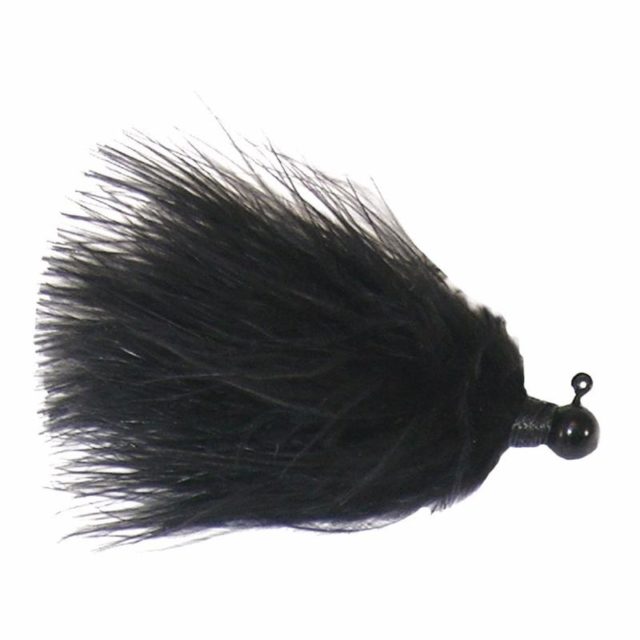
The breathing, living, pulsating action of the marabou jig has always made it popular for bass fishing. It’s one of the oldest jigging lures out there, made popular during the 1950’s and 60’s, then reborn and made popular again in modern times by notable Canadian bass tournament anglers. The success of hair jigs on Canadian and Great Lakes smallmouth fisheries has translated into success on my inland waters of WI.
While popular during bass fishing’s formative years, the hair jig is an unknown to today’s generation of smallmouth in our lakes.
I’d rather fish with other tactics, but what’s an angler to do when combating mayfly hatches, bug hatches, high skies and no wind, surfacing fish that won’t touch a topwater, and excessive angling pressure? Year-round, the hair jig outfishes anything else by a wide margin, and does so effectively in these adverse conditions. 2018 was the second straight year the hair jig caught loads of fish during the June and July post-spawn and early summer fishing periods.
The hair jig is something different, and not a lot of people have confidence using it yet. The ultra light-weight and extreme slow fall of the hair jig makes it possible to drag the bait across rough hard bottom terrain. The slow glide also enables it to hang in range of a smallmouth’s strike zone.
The main sizes most commonly used for this technique include 1/32 oz. 1/16 oz. and 1/8 oz. sizes. Wind, depth, line size, and how fast you plan to work the bait should all be considered when choosing the bait size that will work best on any given day. With medium light to medium extra fast action spinning tackle, I fish the lightest presentation that I can can get away with, on light 10 lb braid, or straight 6lb. fluorocarbon. The slow fall of these baits enables an angler to fish the bait horizontally through the water column at a very slow pace. Cast out as far as you can reach, let the jig glide down to the desired depth, point the rod tip down, and start reeling. Let the hair pulsate and do all the work for you. Lift and drop your rod throughout the retrieve also to trigger strikes.
Hair jigs will represent whatever you want them to be. Mayflies, leeches, crayfish, minnows, other invertebrates creatures and critters. Common colors are blacks, olives, browns, yellows, purples, maroons, tans, and greys.
End of June through early July has been an awesome hair jig bite. On some days, it’s been the secret weapon. When all else fails, the hair jig goes.
S/O to Gregg Kizewski and Super K Fishing for tying up some of the best hair products for bass. Best of all, besides quality – they’re made locally.
Lots of hair jig brands and jig tiers are out there. Crafty jigs abound. You can adjust their rate of fall experimenting with different sizes of braid and fluorocarbon lines. When the going gets tough, get going for smallmouths on hair jigs.
If you’ve located the fish, try these smallmouth bass baits and tactics for next year. These all highlighted my season of excellent catches. A diversified lure selection will not only make you a more versatile angler, but allow you to catch more fish. Prime patterns and favorite lures can be revisited each year, especially as the environment and behaviors of smallmouth bass dictate their locations and influence their feeding habits.
Chasing trophy smallmouth bass year round requires a good lure selection of fish catchers like this. Be diverse, and not one-dimensional.
What were your best of 2018? Feel free to comment in the space below!


